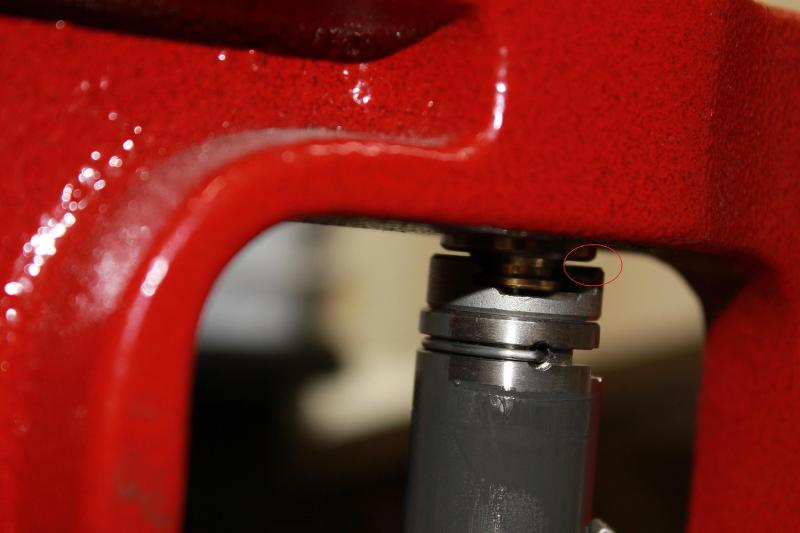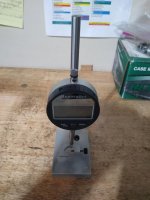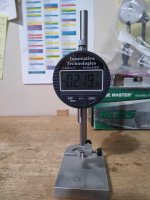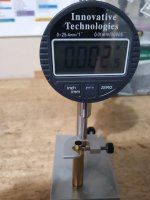All presses will have some flex/stretch/deflection when sizing a case , some more then others . I find that deflection seems to be more in the linkage between the ram and handle rather then the frame of the actual press .
Here is how much my Hornady deflects when sizing a 308 case . You must look for the gap/crack of light between the die and shell holder when sizing a case , You need a load on the press ( actually sizing a case ) in order to know if you have removed the gap and deflection in the press . If you run the die down to just kiss the shell holder . When actually sizing a case there will be a gap , that gap allows for the inconsistency I believe you are seeing .
Die adjusted to just kiss the shell holder with no case in the die
Same die setting but this time sizing a case , note the gap that has appeared
The best way to defeat press deflection is for the die and shell holder to make hard or firm contact at the top of the stroke ( cam over if allowed ). When doing that with a standard shell holder the case gets sized to SAAMI minimum or smaller . The problem most of us run into with that is we often don't want are cases sized down that far from head to shoulder datum and we need to back are die out to get the proper .002 shoulder bump . However as soon as the die is no longer making firm contact with shell holder at top of stroke we introduce that press deflection back into the sizing process .
Depending on the size of the case and or how work hardened it is and your die and shell holder are not making hard contact . The cases can come out longer or shorter ( head to datum ) do to how much the press deflects/flex's on each individual case . When we're only talking .002 the press does not need to give/flex much for it to translate to the sized case .
So if a standard shell holder when making hard contact with the die sizes your case to 1.618 and you want it sized to 1.624 . How can you get that 1.624 bump and still make firm contact between the die and shell holder ? That's where the Redding competition shell holders come in . They come in a set of five and allow you to size your cases longer then a standard shell holder while still making hard contact with the die . They allow you to size your cases longer in .002 increments then a standard shell holder while still making firm contact . Those increments are marked on each shell holder in the set . When used as designed the consistency in which I can size my cases is still a little mind blowing to me . Most of my cases regardless of manufacturer or times fired ( up to 4 because I anneal ) come out +/- .0005 . some cases come out +/- .001 but not many .
They also come in quite handy when sizing for multiple rifles that use the same cartridge . If rifle A needs a shoulder bump to 1.626 and rifle B needs a shoulder bump to 1.624 . You just use the proper Redding competition shell holder with no need to adjust the die . I have not adjusted my dies in years and load for multiple rifles in the same caliber .
I often say competition shell holders are the one thing you must have that you really don't need .
https://www.midwayusa.com/product/101253343




